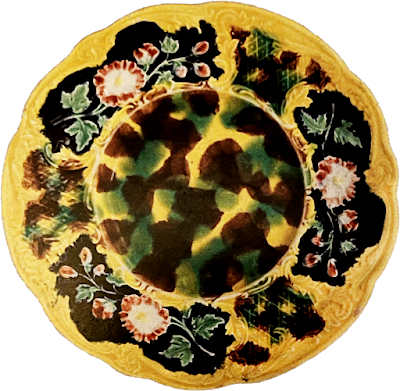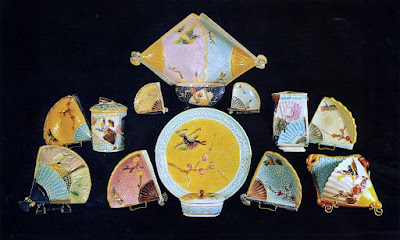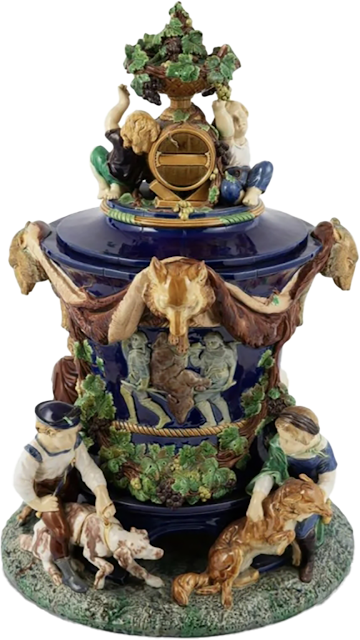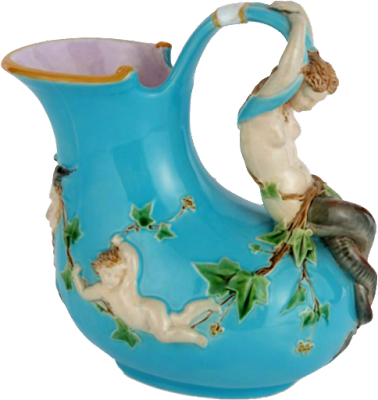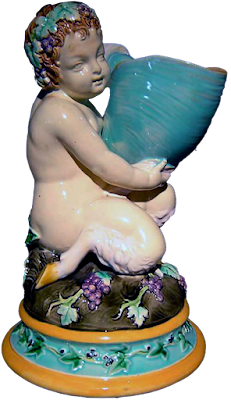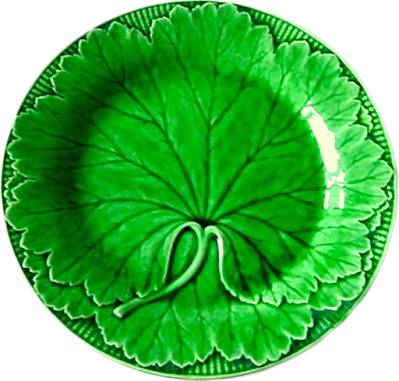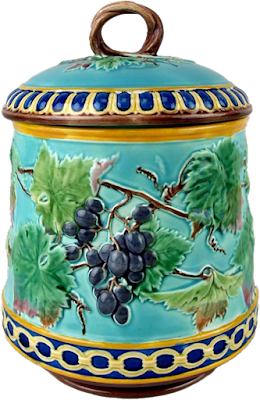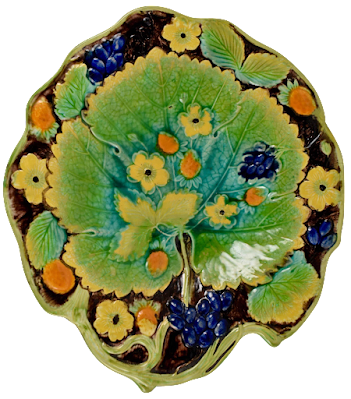Eureka majolica Merry Xmas and Happy New Year dessert stand
Very little is known about the Eureka Pottery. What we do know is that the company was founded in 1883 by Leon Weil when he took over the Franklin Pottery at the corner of Prince St. and Meade St. in Millham Township, New Jersey, an area now part of Trenton, Mercer County.
Map of Millham, NJ
Location of Eureka Pottery at Prince and Mead St.
Leon Weil was a relative stranger to the pottery business, having formerly been involved in the liquor distribution business in Philadelphia. He fled Philadelphia to avoid creditors after the failure of his company and settled in New Jersey where he established the Eureka pottery with money from his wife’s family. His pottery experience was peripheral, having dabbled in the business around Philadelphia for several years. Eureka was a small, single kiln operation. Unfortunately, Weil’s lack of experience in the trade forced him into bankruptcy after only one year, closing his business in February 1884.
After the failure of Weil's investment, the pottery reverted to property owner Thomas Whitehead from whom the property was leased, who offered the pottery to Noah Bock and Charles Bock. They continued use of the Eureka site and name, expanding to a larger site nearby they renamed the Eureka Porcelain Works, potting earthenware and porcelain. There is no indication that they continued production of majolica but the possibility exists. The Bocks operated the pottery only until 1887 when it was closed by a devastating fire. It was succeeded by Pope & Lee’s Pottery in that location.
The Eureka Pottery’s majolica production was small and short lived. Several of the designs were copies of European designs while some others were clearly inspired by English predecessors, but they did make a few original designs, and the surviving marked wares confirm their high quality.
Two designs were direct copies of Shorter & Boulton originals.
Eureka Pottery majolica pitcher
Shorter & Boulton majolica pitcher
Eureka Pottery majolica plate
Shorter & Boulton majolica plate The company made a copy of a Schiller & Son design.
Eureka Pottery butter dish with stand
Schiller & Son cane ware butter dish
The company also made some original designs.
Eureka vase inspired by the Shorter & Boulton
pitcher shown above
Eureka Pottery majolica plate inspired by the
Wedgwood majolica Lincoln plate below.
Wedgwood majolica Lincoln plate
Eureka majolica Merry Xmas and Happy New Year plate
Eureka majolica potpourri jar
Eureka Pottery floral plate
The reverse of Eureka pieces are sponged with a brown glaze over a white body Marked pieces have the words EUREKA POTTERY impressed in a semicircle above TRENTON in a straight line.
Reverse of the rabbit butter stand shown above.
Attribution Hearsay
A search on the literature often attributes the well known majolica
Fan pieces to Eureka but there is no proof of this. I believe this attribution was first made by
Charles Rebert and later repeated by
Mariann Katz-Marks in the early resources on majolica based largely on hearsay.
Image from Charles Rebert's American Majolica 1850-1900
showing the erroneous attribution of Shorter and Boulton Fan and
Wardle Fan wares to Eureka
Any adscription that Eureka played in copying the Shorter & Boulton Fan pieces is unsubstantiated.
Marked Shorter & Boulton Fan ice cream dish
The pattern certainly appeared to have been copied by a pottery in the United States but it is unknown if Eureka is responsible. It seems unlikely considering the company's short life span. There has never been a marked example found, nor do the reverses match known Eureka pieces. More evidence points to the Willets Pottery, also of Trenton, as the pottery that created these
Fan copies. As such I am not including them here as credited to Eureka. For more information on the literature tying these
Fan pieces to Willets Excelsior Pottery check my previous post on the
Willets Pottery.
An interesting side note to the Eureka story is that shards of an unglazed example of the Eureka Merry Xmas and Happy New year plate mold were discovered on the grounds of the South Carolina Pottery Company.
There doesn't seem to be any proof as yet that the South Carolina Pottery Co. created copies from these Eureka molds but that possibility remains open. Until further information surfaces we simply don't know.















